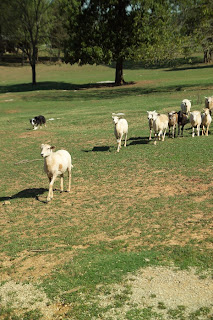Whoa
I'm relieved to be home, but part of that meant I started dealing with the overflow. Yesterday I filled up my biggest cooking pot with bits of apple and started cooking. This morning, I canned 41/2 pints of applesauce. I still have something like 7lbs of apples from the farm to go!! I just didn't have strength to start again with more of the applesauce right away. I managed something far more interesting. I found a professor who specializes in antique apple varieties from my alma mater, and he suggested I mail him samples of the apples and pears. (My graduate degrees are from here and here but as far as I'm concerned, a school that can ID old apples and offers courses in beekeeping has to be my all time favorite, hands-down) Meemeemeee. La la la "Far above Cayuga's Waters with its waves of blue, proudly stands my alma mater, glorious to view...."Ahem. Right. Back to the blog.
This kind professor will do a tentative identification for me if the produce is still in good shape when it reaches him. Apparently he does this for several abandoned or old orchards a year. So, I rushed off to the post office, and dropped by the library because it's next door.
Meanwhile, I've been to the vet. with the dog (she's healthy), had a visit from a locksmith, scheduled to pick up a 1/4 of a cow--yes, locally grown, grass fed beef of our own-- and then drop off part of that at a friend's house, since we just don't eat that much meat. The professor and I have been through the photos from the last festival, I've scheduled a meeting with my editor, and we're having guest over for dinner. Oh, and it's Halloween, so even though we don't get many trick or treaters, I bought the requisite candy. The dogs get bones since they'll hang out in their crates for the festivities. Yes, I bought the bones right when I bought the candy.
This is the sort of household minutiae that's exhausting on its own terms, but I'm glad to be home. Thanks for all your cheery comments, supportive ideas, etc. When I'm able, I'll broach some more knitting and spinning stuff. For now? I think I'm going to start cooking. If the refrigerator is still overly full in 2 or 3 hours? Well now, that would be more than just a little scary. Can apples, greens, and squashes multiply there, in the dark with the door closed?
I did try to get my film developed, but the drugstore's machine was broken--and well, there's only so many errands a person can do in three days. Photos and more will be available soon. In the meanwhile, keep enjoying that goat picture, Marti!











 We had no cell phone service to speak of in the Hudson Valley. This was a little tough, because the professor's NYC relatives wanted to see us and drove up to the festival, but couldn't reach us to tell us they were there. Oddly, by a little after 2 on Saturday (we'd been in there since 9 AM) I decided we needed a brief break from the crowds. We headed out towards the rental car for a rest and....there was the professor's family! Pictured here from left to right: me, the professor's brother, our sister-in-law, the professor's father's sweetheart, and the professor's father. (The professor shot the photo.)
We had no cell phone service to speak of in the Hudson Valley. This was a little tough, because the professor's NYC relatives wanted to see us and drove up to the festival, but couldn't reach us to tell us they were there. Oddly, by a little after 2 on Saturday (we'd been in there since 9 AM) I decided we needed a brief break from the crowds. We headed out towards the rental car for a rest and....there was the professor's family! Pictured here from left to right: me, the professor's brother, our sister-in-law, the professor's father's sweetheart, and the professor's father. (The professor shot the photo.) 























